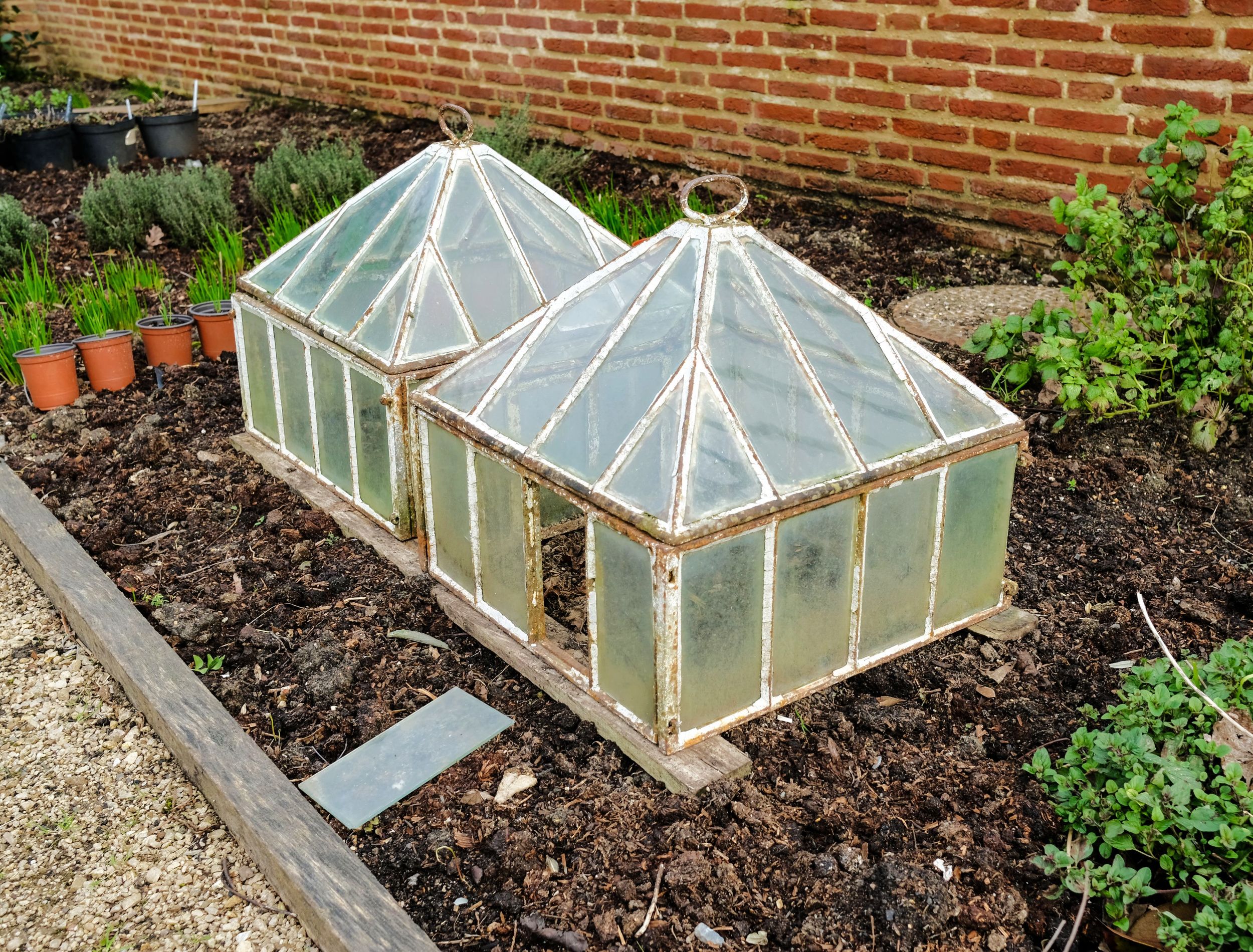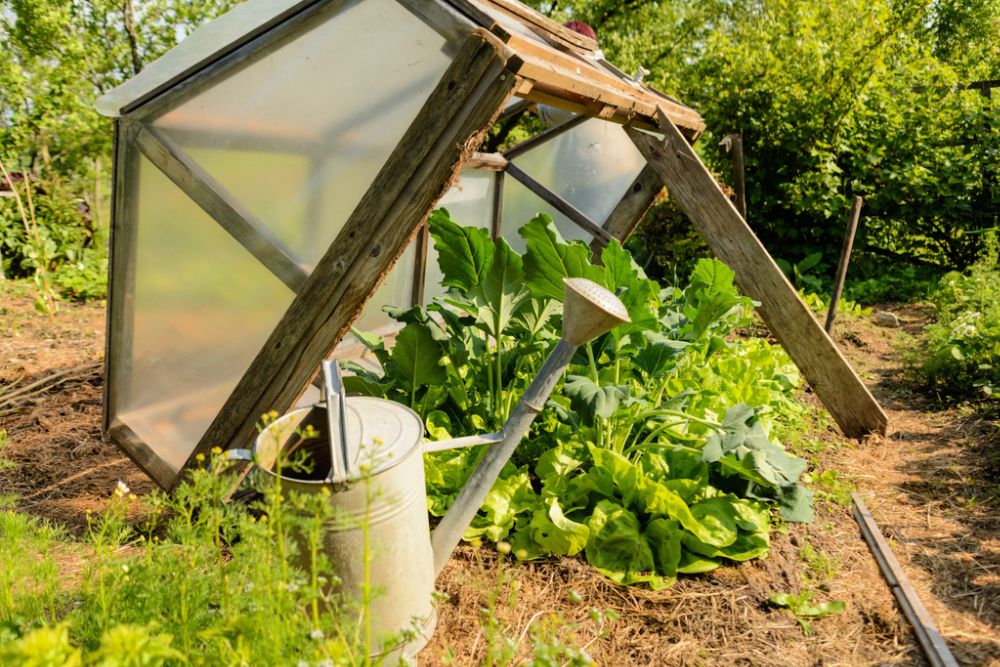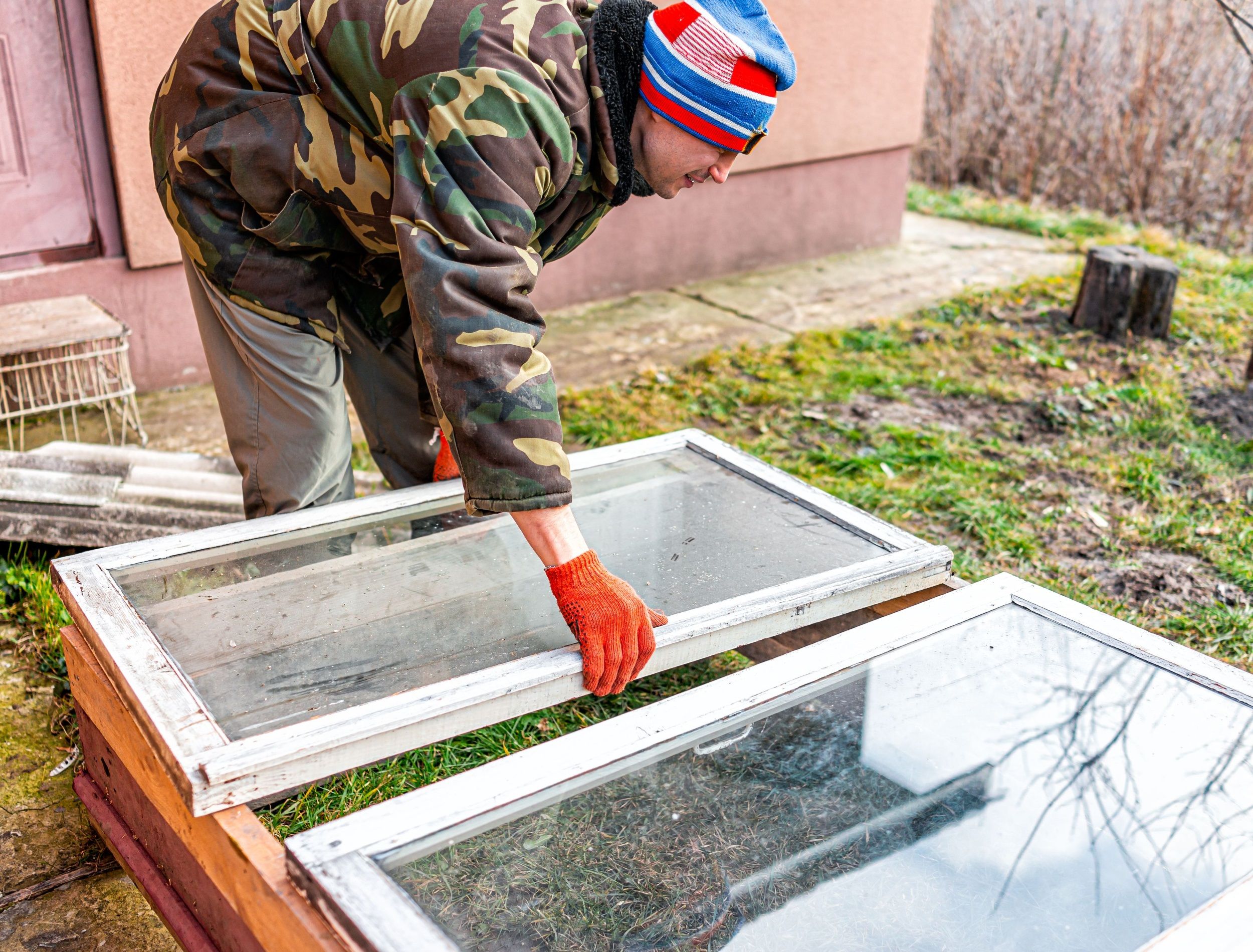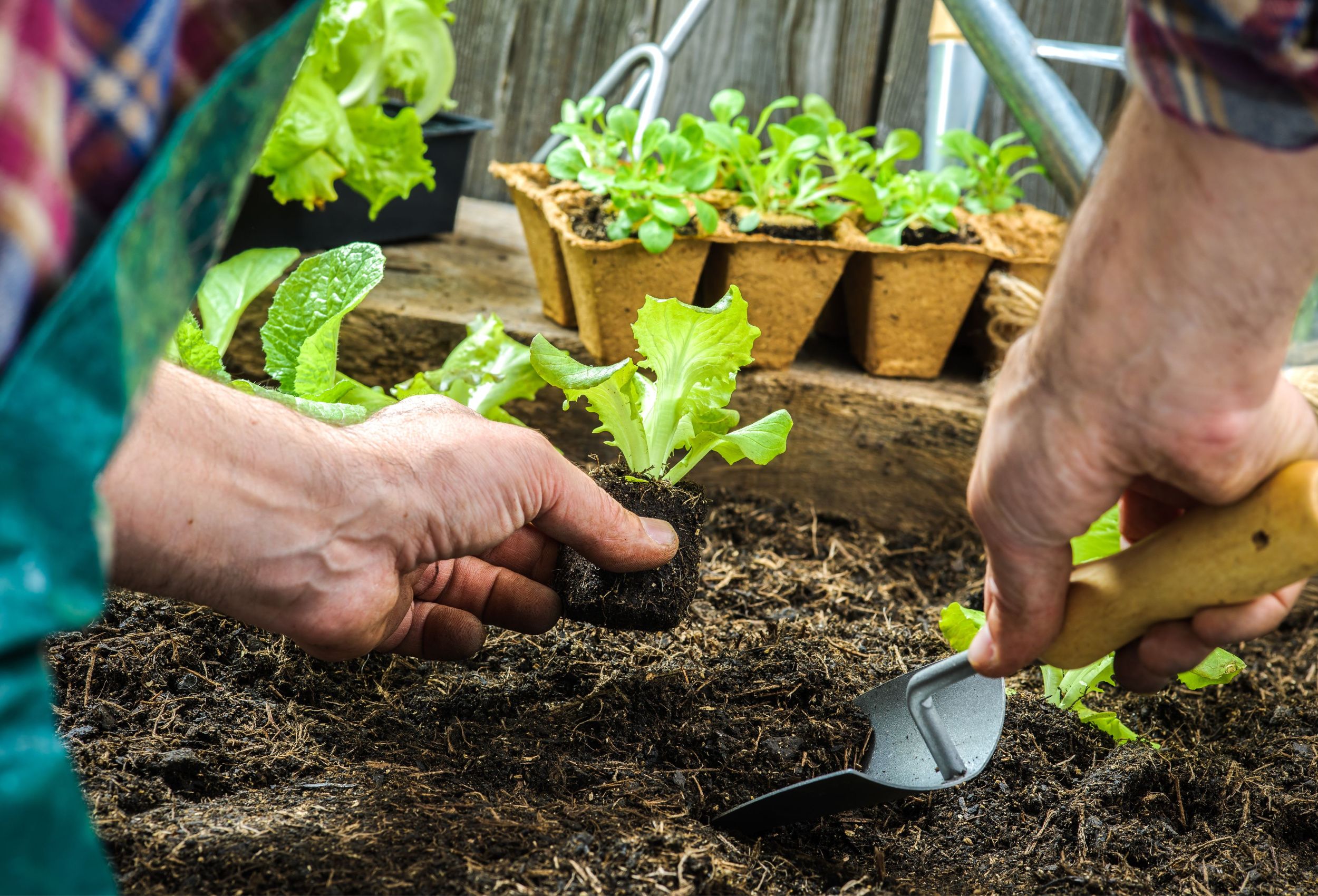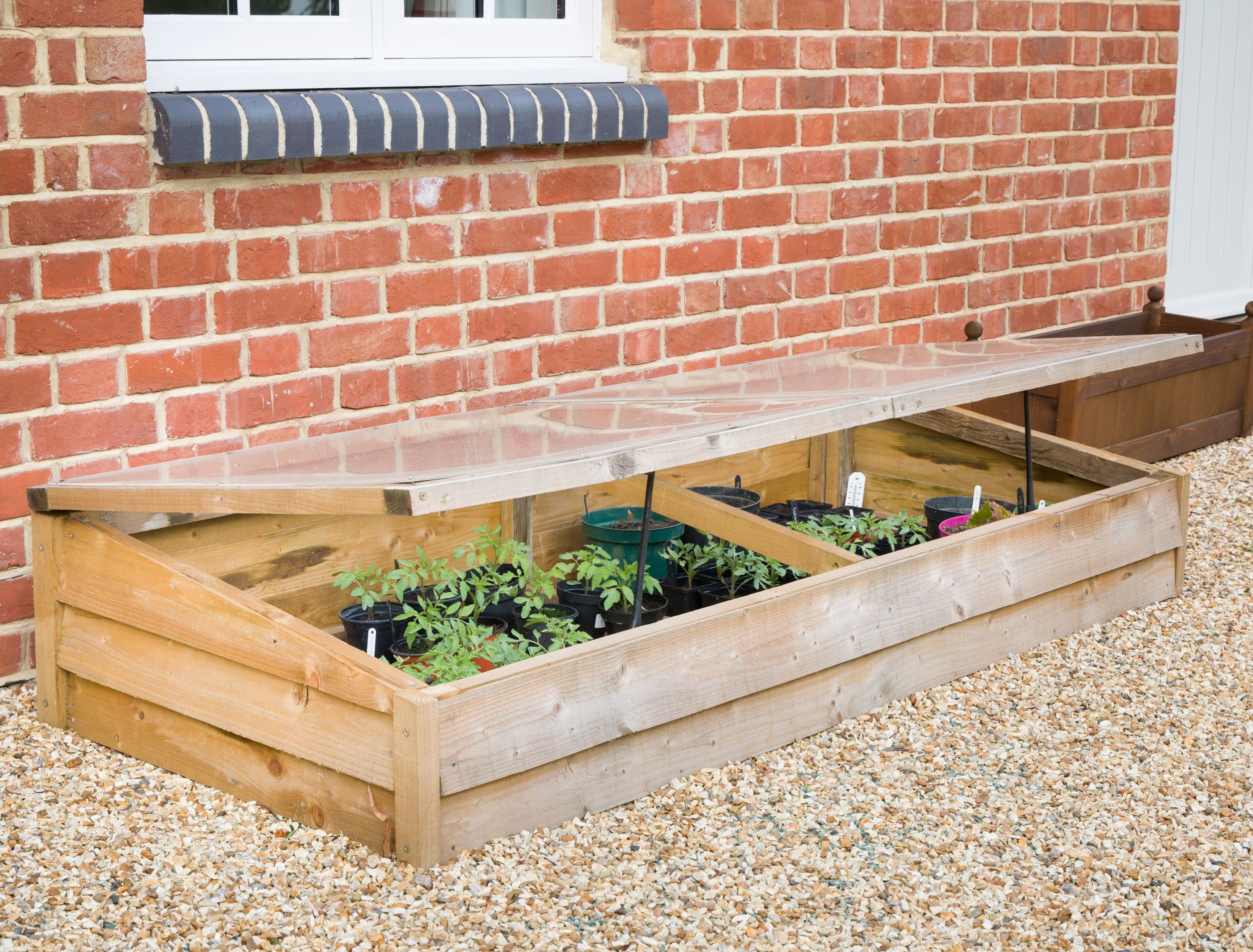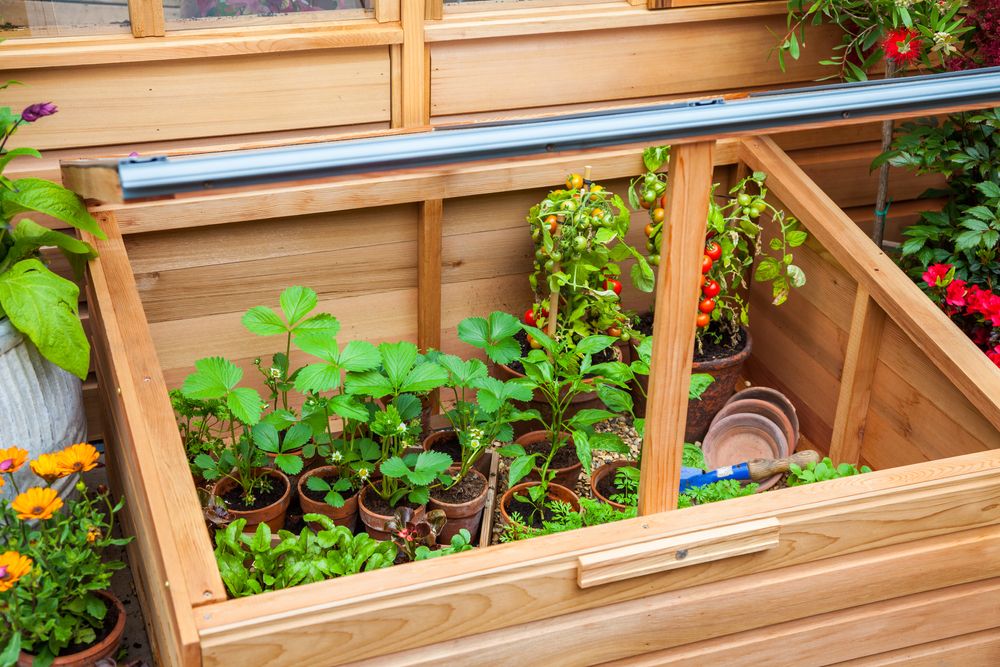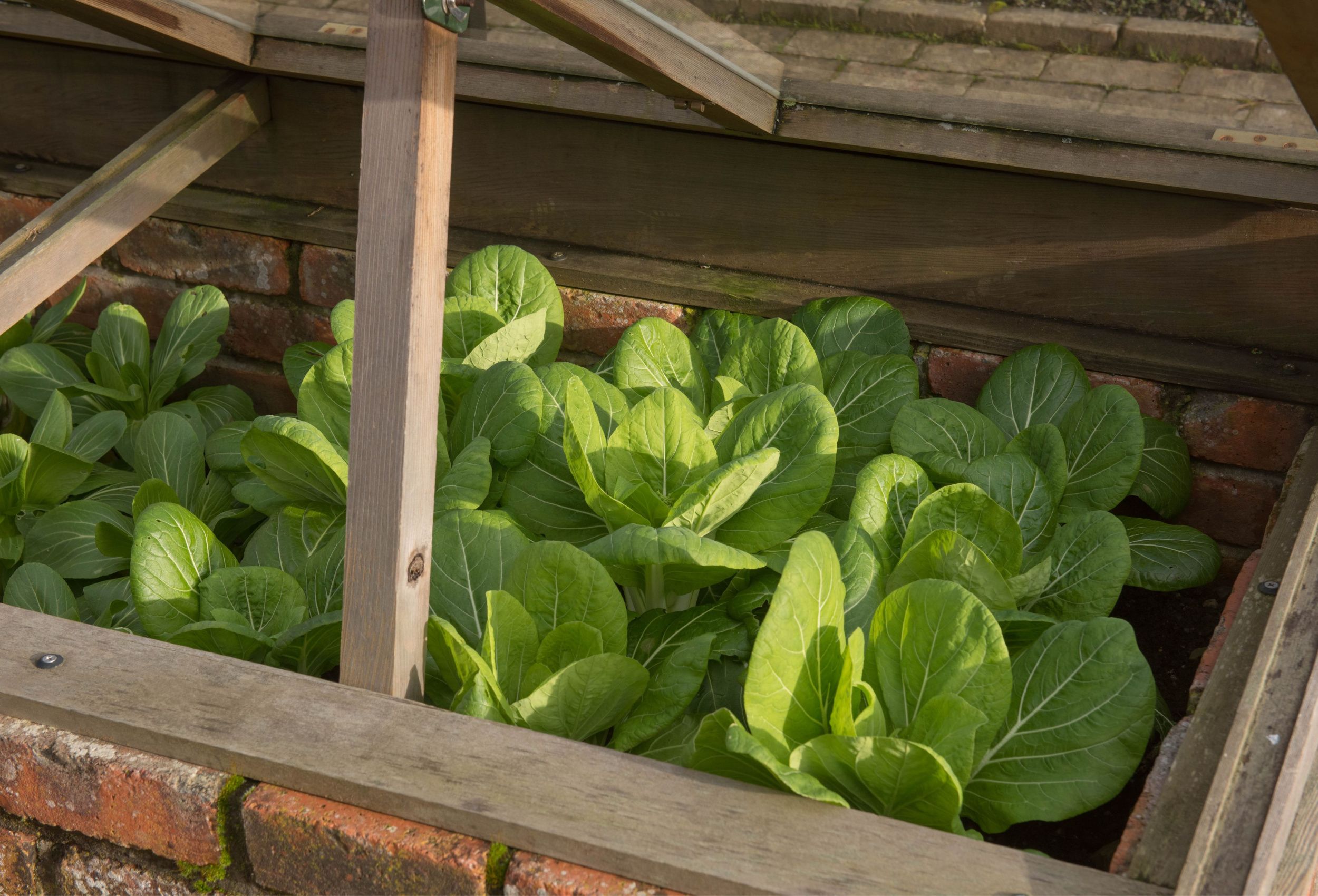Whether you're interested in extending your crops or protecting your favorite potted perennial plants through the cool seasons, a cold frame is the way to do it. Easy to install and even easier to use, these set-ups are perfect for winter and spring gardening. As a bonus, there are ways to use them in the summer as well!
The minimalist structures take up little space in the garden but add much-needed protection and storage for year-round use. But if you need help getting more than one use out of your cold frame, you'll be happy to hear that there are six ways to use them in your yard.
What is a Cold Frame?
Image credits: Bildagentur Zoonar GmbH via Shutterstock
A cold frame is typically a wooden box with a clear lid that sits next to a house or greenhouse wall. They're easy to DIY from repurposed materials, such as old windows and lumber. Though it is unheated, the clear top captures solar energy and shelters whatever you put in it from the elements.
The units range in size depending on your needs, from sleek a-frame styles to small portable boxes. Though they are both similar in structure, cold frames differ from greenhouses because a cold frame doesn't typically have a heat source, and its primary purpose is to protect plants from cool weather conditions. Cold frames are also generally much smaller than greenhouses.
6 Ways To Use a Cold Frame
Fortunately, these DIY frames are extremely multi-purpose. Soon you'll have great crops and prized blooms!
Overwintering
Image credits: Kristi Blokhin via Shutterstock
If you've ever wrapped your perennials before, you know how time-consuming it is to overwinter your container plants as you winterize your garden. Fortunately, a cold frame turns the task into something requiring minimal effort and time. Wait until the ground freezes to deter pests such as moles; then, you can place your plants in the frame for winter protection.
While the plants won't grow lush green foliage during the winter months, you won't have to worry about displaying cut-back stems that can sometimes be an eyesore. You can pull them out of the frame by spring, and they should resume normal growth.
Pro Tip: Pack the cold frame with lots of pots and add leaves or mulch to the soil surface to prevent air gaps and maintain warmth. You can also use a tarp or another covering, so the plants don't receive too much sun and begin growing.
Giving Seedlings a Head Start
Image credits: Alexander Raths via Shutterstock
A cold frame is also excellent for giving seedlings a head start. Gardeners can plant their tomato plants, eggplants, and peppers from seed in the unit because it's a bit warmer than outside. This also protects the new plants from cold winds and extreme weather changes.
You can add a mixture of well-draining soil and compost and directly plant into the frame or plant your seedlings in nursery pots. Remember to check the temperature of your cold frame before planting your seedlings -- 70 to 75 degrees Fahrenheit is usually best.
Pro Tip: Place the cold frame so it faces south to get the most exposure from the sun.
Acclimating Seedlings
Image credits: Paul Maguire via Shutterstock
Whether you sow seeds indoors or in your cold frame, they require hardening off before exposure to the elements. Fortunately, a unit makes it easy to gradually expose the seedlings to temperature shifts, winds, and rainfall.
You can open the lid to the cold frame from morning to evening when daytime temperatures are 65 to 75 degrees Fahrenheit and nighttime temperatures are around 55 to 65 degrees Fahrenheit. After a week, leave the lid off all day and night. Then, transplant the seedlings in pots or the garden by the third week.
Extending the Season
Image credits: Alex Yeung via Shutterstock
Like planting seeds early in the spring to get a jump on the season, you can store container plants and veggies in the unit during fall to extend the season. Again, position the set-up towards the sun to ensure the plants get enough warmth as the weather cools down.
This can add to the time you have to harvest leafy greens and root crops, but it also gives time for tomatoes and cucurbits to ripen.
Tender Crops
Image credits: Peter Turner Photography via Shutterstock
You can also grow plants to maturity in the cold frame if you'd like. Wind and rain can damage the delicate leaves of some plants, while pests and animals may crunch on veggies such as lettuce in your garden. Planting in a cold frame protects the plants from the elements and nearby animals.
Like growing seedlings, you can either grow in pots or plant directly into the ground of the cold frame. Care for and harvest the plants as you regularly would, depending on their preferences.
Bonus: Storage
If you choose not to grow plants in your cold frame through the summer, you can use it for storage instead. If your tool shed or garage is a bit too far from your garden, keeping essentials such as potting soil, a watering can, extra seeds, and common tools in your unit makes for easy access and convenient storage.
Bring on the Cold!
Simply put, frames are the perfect way to protect your plants when it is cold out. What this means is really up to you, depending on whether you'd like to get a jump on the growing season, extend the lifespan of your crops, store a few items, acclimate your seedlings, or overwinter your plants.
Do you have any ideas for using a cold frame? Share in the comments below!

